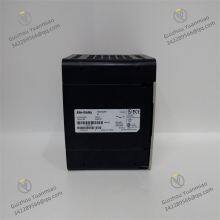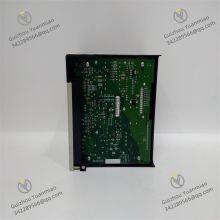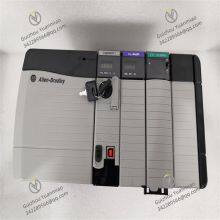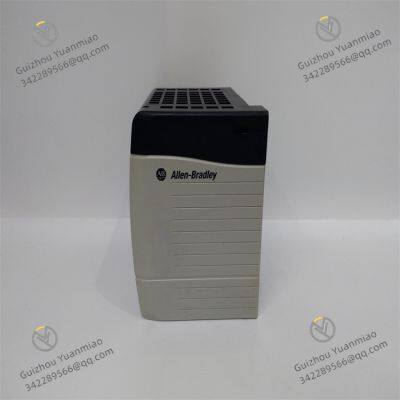Material
Other, Global universal model
Condition
Other, Global universal model
Task
Other, Global universal model
Mathematical Model
Other, Global universal model
Signal
Other, Global universal model
Customized
Non-Customized
Structure
Other, Global universal model
Operating temperature
0°C to 60°C
Humidity
5% - 95% (non - condensing)
Power Input
24V DC
I. Overview
1756-PA75 is a high-performance power supply module in Rockwell Automation's ControlLogix series. It mainly provides stable and reliable DC power for various modules on the ControlLogix rack (such as controllers, input/output modules, communication modules, etc.) and serves as the "power core" of the entire automation control system.
This module can be seamlessly integrated with racks and other modules of the ControlLogix series. It has efficient power conversion capability and good stability, and can continuously supply power to the system in industrial environments, ensuring the normal operation of controllers, I/O modules and other equipment. With its reliable power supply performance, complete protection functions and wide adaptability, 1756-PA75 is widely used in various control systems in the field of industrial automation, such as production line control, equipment automation, process control and other scenarios.

II. Technical Parameters
Input voltage range: It supports a wide range of AC input voltages, usually 100V AC - 240V AC (specific parameters are subject to the product manual). It can adapt to the power grid voltage standards in different regions, improving the versatility and applicability of the module.
Output voltage and current:
The main output voltage is 5V DC, which is the standard working voltage for most modules in the ControlLogix series. The output current can reach 15A (specific parameters are subject to the product manual), which can provide sufficient power support for multiple modules on the rack.
Some models may also provide 24V DC auxiliary output for powering some small sensors or actuators. The output current is usually small (such as 2A, specific parameters are subject to the product manual).
Power output: The rated output power is 75W (which is the origin of "PA75" in the model), which can meet the power supply needs of medium-sized ControlLogix control systems and ensure the stable operation of all modules in the system under full load.
Efficiency: It has high conversion efficiency, usually above 80% (specific efficiency value is subject to the product manual). It can effectively reduce energy loss, lower operating costs, reduce the heat generation of the module itself, and extend the service life.
Protection functions:
Overcurrent protection: When the output current exceeds the rated value, the module will automatically limit the output current or cut off the output to prevent damage to the power module and connected equipment due to overload.
Overvoltage protection: If the output voltage rises abnormally beyond the set threshold, the module will activate the protection mechanism to avoid damage to downstream modules caused by high voltage.
Short-circuit protection: When a short-circuit fault occurs at the output end, the module can respond quickly and cut off the output. It can resume normal operation after the short-circuit fault is eliminated, protecting the safety of the system.
Over-temperature protection: When the internal temperature of the module exceeds the specified limit, it will automatically reduce the output power or stop output to prevent the module from being damaged due to overheating.
Environmental adaptability:
Operating temperature: It can work stably within the temperature range of 0°C - 60°C and can adapt to common temperature fluctuations in industrial sites.
Relative humidity: It can operate normally in a relative humidity environment of 5% - 95% (non-condensing), suitable for humid production workshops and other environments.
Vibration and shock resistance: It complies with relevant industrial standards (such as IEC 61131-2), has certain vibration and shock resistance capabilities, and can work reliably in occasions with slight vibrations (such as near production lines and machine tools).

III. Functional Characteristics
Stable and reliable power supply: 1756-PA75 adopts advanced power conversion technology and voltage stabilizing circuits, which can provide stable DC voltage for modules on the ControlLogix rack. The output voltage ripple is small, ensuring that controllers, I/O modules and other equipment work normally in an environment with small voltage fluctuations, and reducing system failures caused by unstable power supply.
Complete protection mechanism: The design of multiple protection functions (overcurrent, overvoltage, short-circuit, over-temperature, etc.) can quickly respond to various abnormal situations, protect the power module and the entire control system from damage, improve the safety and reliability of the system, and reduce the cost of fault detection and maintenance.
Efficient energy conversion: High conversion efficiency can not only save energy but also reduce the heat generation of the module, reduce the thermal impact on the surrounding environment, and extend the service life of the module, making it suitable for industrial scenarios with long-term continuous operation.
Convenient installation and integration: It adopts a standardized rack mounting method and can be directly installed in the power slot of the ControlLogix rack. The installation process is simple and fast, without complex wiring and debugging. It can seamlessly cooperate with other modules on the rack to form a complete automation control system.
Intuitive status indication: The module is equipped with LED status indicators, which can display the working status of the power supply (such as normal operation, fault, etc.). Operators can quickly judge whether the power module is working normally through the indicators, facilitating daily maintenance and fault troubleshooting of the system.
Wide voltage input range: Supporting a wide input voltage of 100V AC - 240V AC enables it to be used in power grid environments in different countries and regions, improving the versatility and flexibility of the module, and reducing compatibility issues caused by voltage mismatch.

IV. Common Faults and Solutions
No output voltage
Phenomenon: After the power module is connected to the input voltage, there is no voltage output at the output end, other modules on the rack cannot work normally, and the status indicator is not on or shows a fault.
Causes and solutions:
Input power failure: Check whether the input AC voltage is normal (100V AC - 240V AC), and whether the input line has disconnection, poor contact, or fuse blowout. Use a multimeter to measure the input voltage, repair the input line or replace the blown fuse to ensure the input power is normal.
Internal module fault: If the input power is normal but there is still no output, the internal circuit of the module may be damaged (such as power device failure, control circuit failure, etc.). Contact professional maintenance personnel for inspection and replace the power module if necessary.
Protection function not reset after triggering: If the module cuts off the output due to triggering the protection function caused by overcurrent, short circuit and other faults, it may be necessary to power off and then power on again to reset the protection circuit after the fault is eliminated. Try disconnecting the input power, wait for a moment, then reconnect it, and observe whether the module resumes normal output.
Unstable output voltage
Phenomenon: The output voltage fluctuates greatly beyond the normal range, causing unstable operation of modules on the rack (such as frequent restart of the controller, abnormal data of I/O modules, etc.).
Causes and solutions:
Excessive input voltage fluctuation: Check whether the input AC voltage is stable and whether there are large voltage fluctuations or instantaneous impacts. If the grid voltage is unstable, a voltage stabilizer or surge protector can be installed on the input side to reduce the impact of voltage fluctuations on the module.
Excessive module load: If there are too many modules connected to the rack and the total power consumption exceeds the rated output power (75W) of 1756-PA75, the output voltage will be unstable. Check the total system load, remove unnecessary modules or add additional power modules to share the load, ensuring that the load is within the rated range.
Fault in the internal voltage stabilizing circuit of the module: If the input voltage and load are normal, the internal voltage stabilizing circuit of the module may be damaged. Contact professional maintenance personnel for inspection and replace the power module if necessary.

Module overheating
Phenomenon: The surface temperature of the module is too high, exceeding the normal working temperature range, which may be accompanied by abnormal noise or odor, and the status indicator may show an overheating fault.
Causes and solutions:
Poor ventilation: Poor ventilation around the module prevents heat from dissipating in time. Check the installation environment to ensure there is sufficient space around the rack, the ventilation fan (if any) is working normally, and clean the dust and debris on and around the module to improve heat dissipation conditions.
Excessive load: Long-term full load or overload operation will increase the heat generation of the module. Check the system load to ensure it does not exceed the rated output power of the module. If necessary, add power modules to share the load.
High ambient temperature: The working ambient temperature exceeds the rated working temperature of the module (0°C - 60°C). Take cooling measures (such as installing air conditioners, fans) to reduce the ambient temperature and ensure the module works within the specified temperature range.
Frequent triggering of protection functions
Phenomenon: The module frequently cuts off the output due to triggering protection functions such as overcurrent and short circuit, causing frequent interruption of the system operation.
Causes and solutions:
Short circuit or overload point in the load: Check each module and connecting line on the rack to find out whether there is a short-circuit fault (such as short circuit at the module output end, damaged line insulation) or overload of a certain module (such as excessive load current connected to the I/O module). Use a multimeter to detect line insulation and module load current, eliminate short-circuit points or replace overloaded modules to ensure the load is normal.
Misoperation of the protection circuit: In rare cases, the internal protection circuit of the module may malfunction. Contact professional maintenance personnel to inspect and debug the module, and replace the power module if necessary.
















































